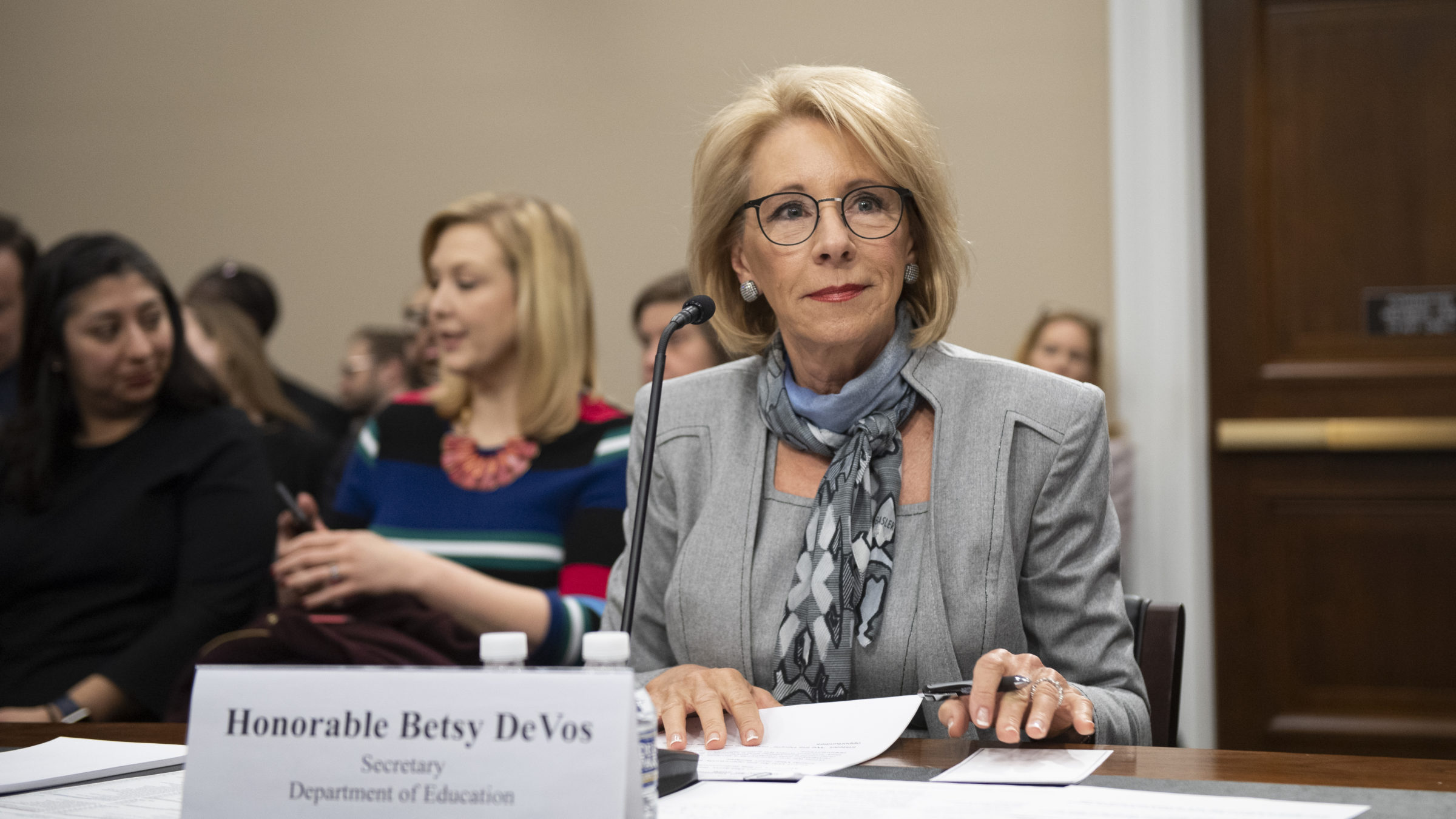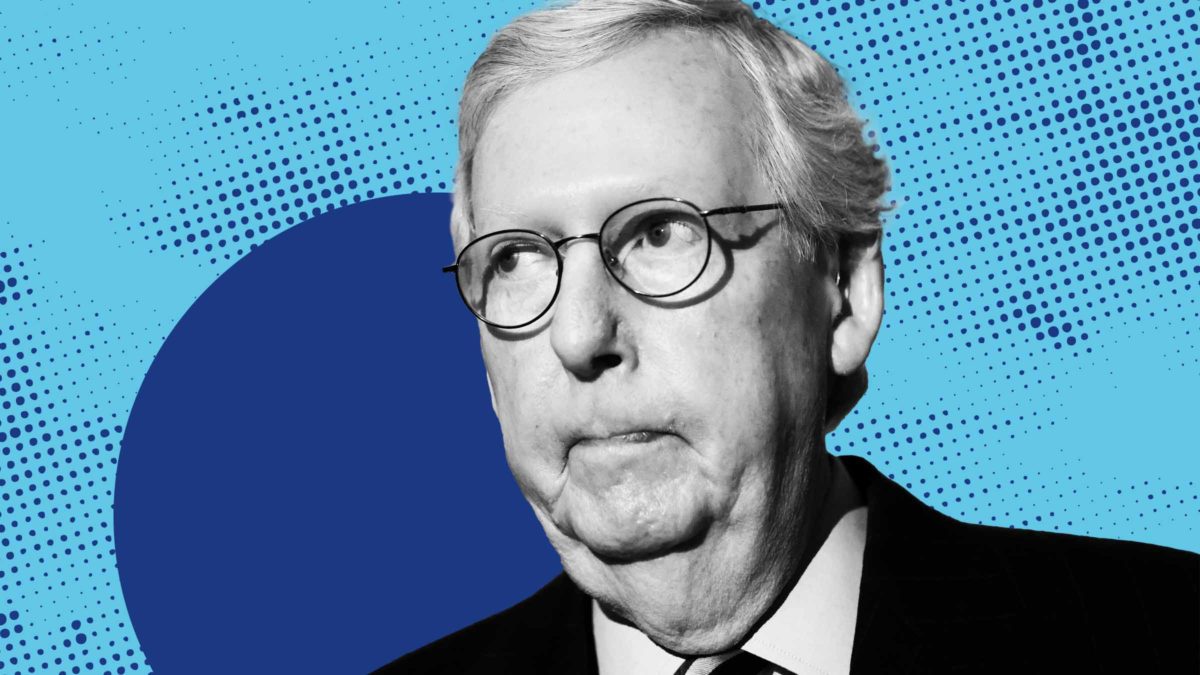There’s one man behind the Federalist Society-induced death of Roe v. Wade whose name you’ve probably never heard. James Bopp Jr. has dedicated his life to ending legal abortion in America. A “pro-life” conservative lawyer, Bopp spent more than three decades as general counsel for the National Right to Life Committee, which frequently brought legal challenges to Roe and coined the term that erroneously characterizes later abortions as “partial-birth abortions.” More recently, the organization made news by releasing model legislation that would criminalize providing help to anyone seeking abortion care “over the phone or internet.”
The right’s battle to end the right to abortion care involved a nearly fifty-year-long intertwined political and legal strategy. In her latest book, Dollars For Life: The Anti-Abortion Movement and the Fall of the Republican Establishment, law professor Mary Ziegler tells the story of how a difference pet project of the conservative legal movement—deregulating campaign finance—became central to the religious right’s campaign to end legal abortion.
Dismantling campaign finance regulations enabled anti-choice activists to elect the conservative zealots who delivered the Supreme Court conservative supermajority that just overturned Roe. Quoting Justice Thurgood Marshall’s final dissent on the Court, the Dobbs dissenters sum up what conservatives understood early on: “Power, not reason, is the new currency of this Court’s decisionmaking.”
For Bopp and his ilk, the need to dismantle campaign finance regulations begins with the anti-choice movement’s failure to respond to Roe by passing a personhood amendment to the Constitution, making legal abortion unconstitutional. By the end of the 1970s, the effort had failed. Ziegler describes how anti-choicers, still determined to end legal abortion, turned their attention to trying to overturn Roe by transforming the federal courts instead. Most infuriating to anti-choicers were the Republican-appointed justices who were nominated, supported, and confirmed to the Court, only to rule from the bench in ways that the religious right viewed as compromising on abortion. Ziegler points to the pinnacle example of this trend for conservatives: the outcome in Planned Parenthood of Southeastern Pennsylvania v. Casey.

Jimmmmmm Bopp in 2013 (Photo by Drew Angerer/Getty Images)
Casey, a 1992 challenge to a series of restrictive abortion laws in Pennsylvania, was widely viewed as the right’s best opportunity to overturn Roe since it came down two decades earlier. The Casey court retained only one justice who had been in the majority in Roe, and the justices who replaced the rest of the Roe majority were all nominated by Republican presidents. The Court’s new look gave anti-choicers hope Casey would end legal abortion in America.
But the conservative majority didn’t deliver what anti-choicers thought they had been promised by self-styled “pro-life” politicians. Instead, a splintered Court weakened the protections of Roe yet reaffirmed its central holding. Ziegler emphasizes Casey as the turning point when grassroots anti-choicers decided they needed to remake the Republican Party in their own image, replacing the GOP establishment, whose luminaries were often pro-choice, with uncompromising anti-choice allies.
To do so, Bopp, whom Ziegler interviewed extensively for Dollars For Life, believed the anti-abortion movement needed to take more control in Republican primaries. And to outspend the party establishment, which spent heavily on their preferred candidates in these races, the religious right would need to deregulate campaign finance so that outside spending organizations could dominate campaign spending. Eroding campaign finance rules would allow ultraconservative political action committees and similar organizations, which are generally issue-oriented spending machines, to shift power from establishment moderates to social conservatives.
Thus began a decades-long fight that culminated in 2010 with Citizens United v. Federal Election Commission, which opened the floodgates for unlimited corporate political spending in U.S. elections. Bopp originally litigated Citizens United before being replaced when the Supreme Court decided to hear the case.

When you’re not Secretary of Education anymore but your family can give as much cash to right-wing zealots as it damn well pleases (Photo by Caroline Brehman/CQ-Roll Call, Inc via Getty Images)
In the decades since anti-choicers began targeting campaign finance regulations, Ziegler chronicles how almost every election since has marked a new spending record. The combined money raised by the two major parties soared from $425 million in 1988 to over $1 billion in 2000. Even with the surge of small-dollar donations in the 2016 election, megadonors represented a greater share of total spending. The 2022 election cost more than $14 billion, more than doubling the amount spent in 2016.
To illustrate the impact of campaign finance deregulation on American politics, Ziegler quotes a 1997 line from billionaire—and future Secretary of Education under Donald Trump— Betsy Devos. “My family is the largest single contributor of soft money to the national Republican party,” she said. “I have decided to stop taking offense at the suggestion that we are buying influence. Now I simply concede the point. They are right.”
The result of anti-choicers’ efforts to decimate campaign finance regulations, which Ziegler dubs an “orgy of spending,” fueled the rise of the Tea Party and, six years later, the election of Donald Trump. Last month, the Supreme Court fulfilled the movement’s promise, overturning Roe in Dobbs v. Jackson Women’s Health Organization. Abortion is now illegal in ten states, while 26 more are expected to ban abortion outright in the near future.
Ziegler’s account of Roe’s fall isn’t complete; the roles of negative partisanship, cynical appeals to white anxieties, and the rise of conservative media take a back seat to Bopp’s activism. But the way Ziegler methodically lays out anti-choicers’ push to create an anti-choice judiciary—and to shape other areas of law in ways that would enable them to create an anti-choice judiciary—gives credence to the view that the “restless and newly constituted Court,” as Justice Sonia Sotomayor recently called it, is merely an extension of the conservative legal wing of the Republican party. Her narrative is also peppered with cameos from conservative ideologues, from Jay Sekulow and John Eastman to Roger Stone and Phyllis Schlafly, all working hard to fill federal courts with conservatives who can be depended on to overturn Roe.
The religious right’s nearly-five-decade-long campaign to end legal abortion stands in stark contrast to the left’s utter failure to organize a step-by-step strategy to expand abortion access—or, at the very least, protect Roe while conservative judges whittled it down to a husk before overturning it outright. Reading Dollars for Life felt a bit like analog doomscrolling, anxiety fuel for waiting to see which legal rights the Supreme Court would roll back that day. Given the history Ziegler describes, it isn’t surprising that the Court eviscerated Roe and is set to decide every major case for the foreseeable future. Conservative activists spent decades working to ensure that they wouldn’t lose.

